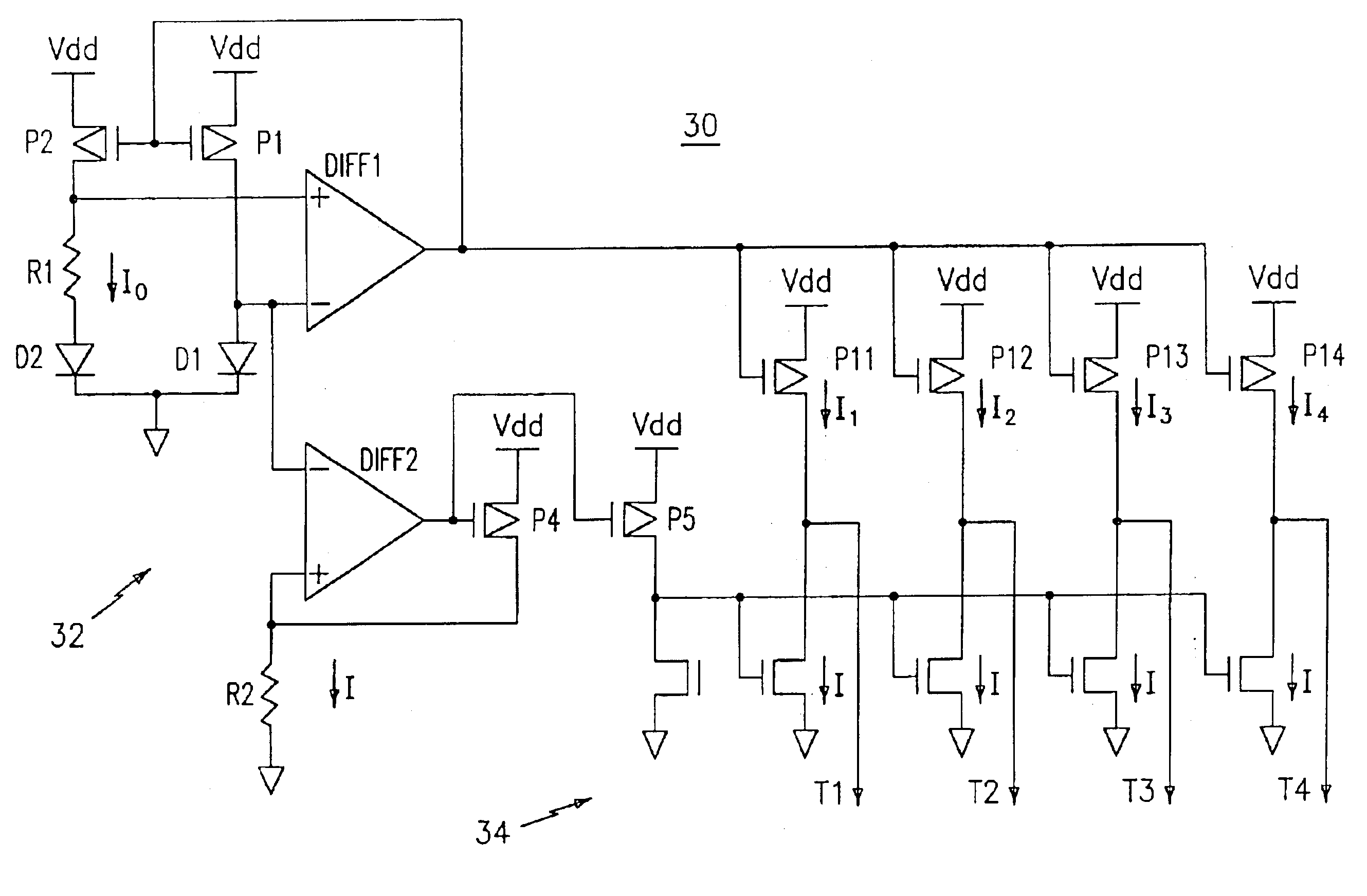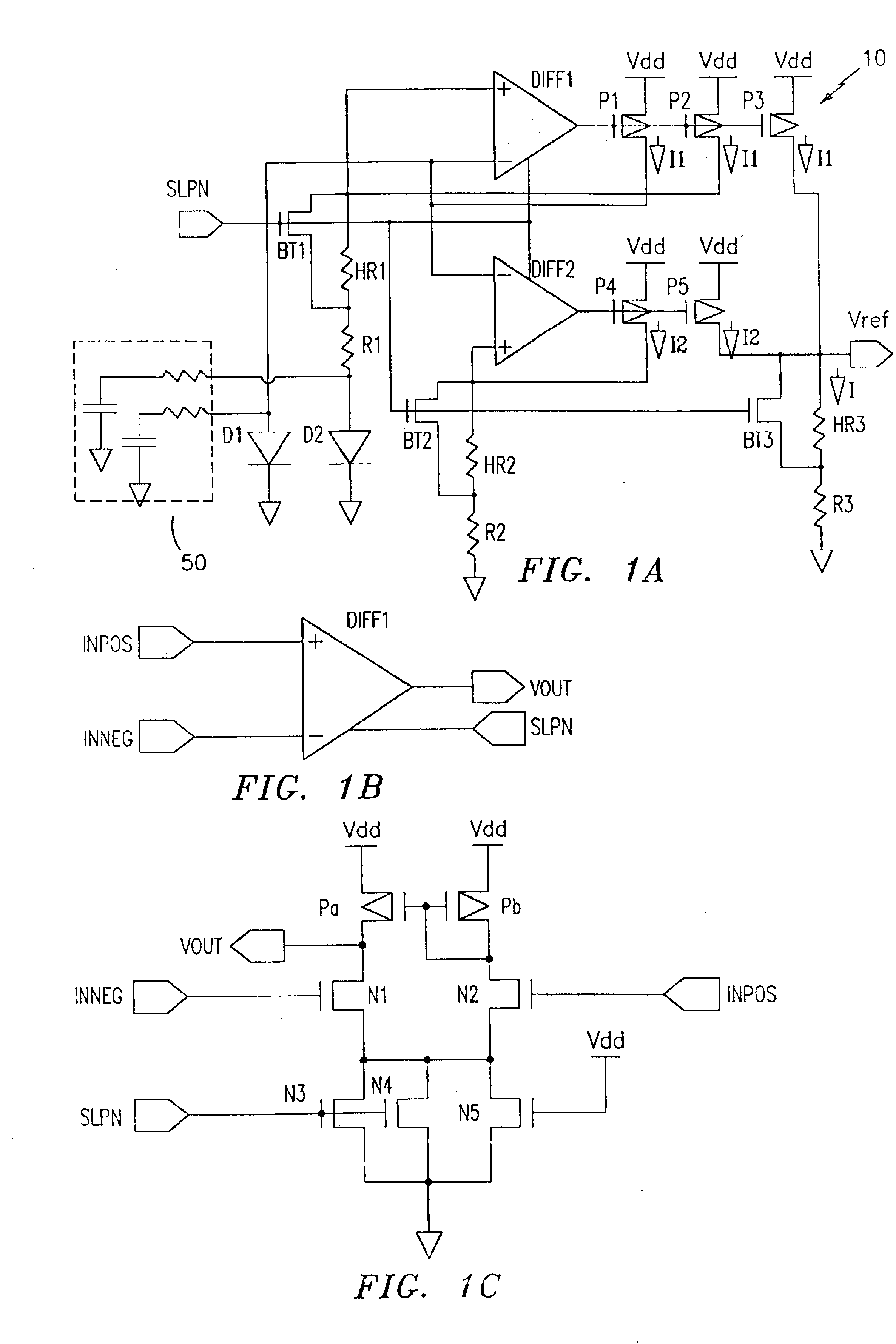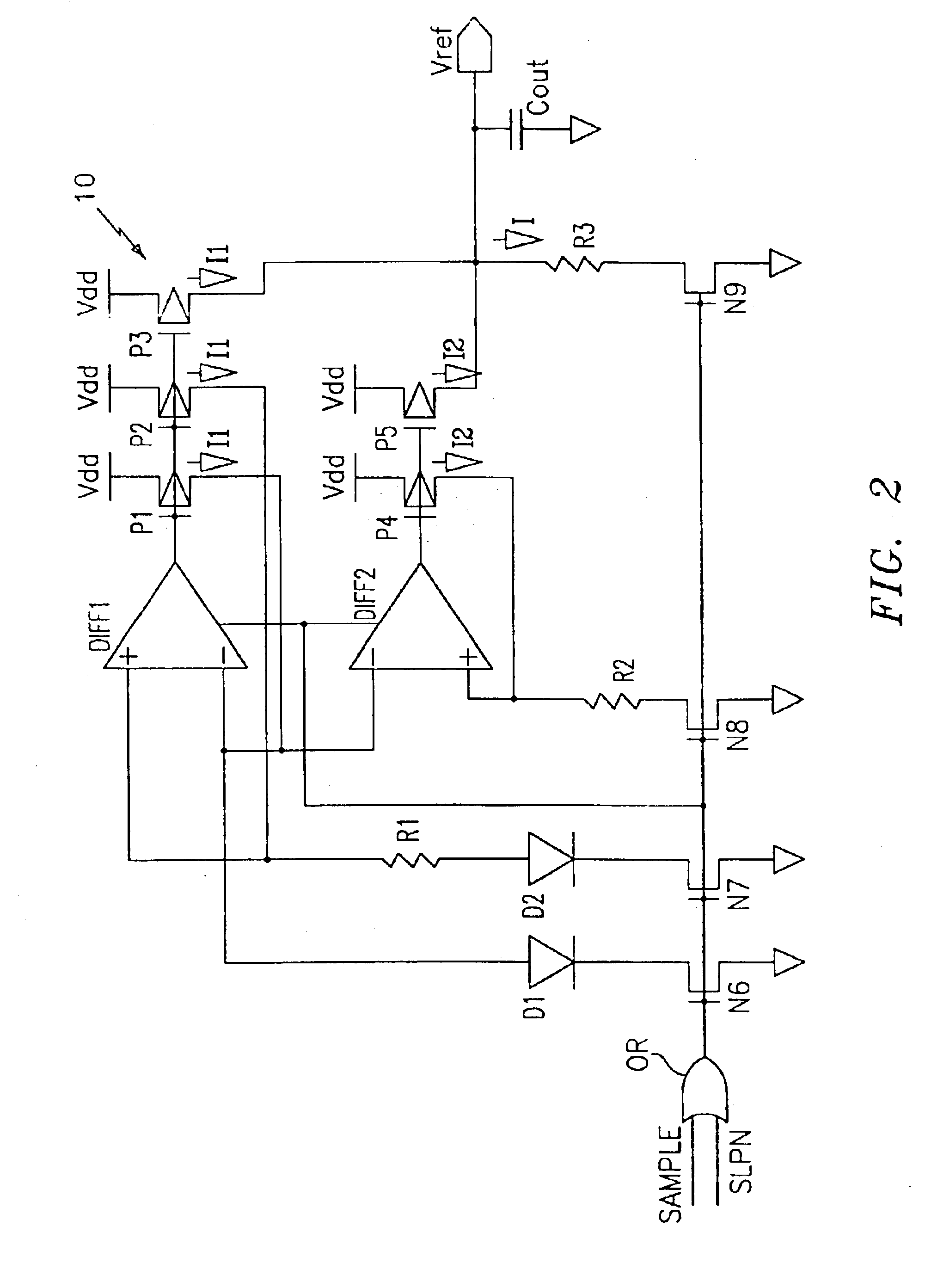Low-power band-gap reference and temperature sensor circuit
a temperature sensor and low-power band-gap technology, applied in the field of integrated circuit (ic) design, can solve the problems of significantly reducing battery lifetime, increasing chip temperature, and reducing battery life, so as to prolong battery lifetime and data retention time, shorten the refresh cycle time, and increase the temperature
- Summary
- Abstract
- Description
- Claims
- Application Information
AI Technical Summary
Benefits of technology
Problems solved by technology
Method used
Image
Examples
first embodiment
A. A First Embodiment
A low-voltage, low-power band-gap reference and temperature sensor circuit can be realized by applying a temperature independent voltage Vref from a band-gap reference circuit as shown by FIGS. 1A and 2 to a temperature sensor circuit as described below. For example, a temperature independent voltage reference Vref from the band-gap reference circuit of FIG. 1A can be applied to an input of a differential amplifier and a temperature dependent reference voltage Vi, where i=1, 2, 3 or 4, obtained from a positive temperature dependent branch or from a negative temperature dependent branch, can be fed to the negative input of the same differential amplifier. When the temperature independent voltage curve intersects with the temperature dependent voltage curve, a predetermined temperature index is read.
A first embodiment of a band-gap reference and temperature sensor circuit is shown by FIG. 3 and designated generally by reference numeral 20. Sensor circuit 20 includ...
second embodiment
B. A Second Embodiment
A second embodiment of the band-gap reference and temperature sensor circuit of the present invention is shown by FIG. 5 and designated generally by reference numeral 30. Sensor circuit 30 includes a band-gap reference circuit 32 and a temperature sensing circuit 34. Sensor circuit 30 uses the concept of positive and negative temperature slope current components to perform temperature sensing.
The band-gap reference circuit 32 is almost identical to band-gap reference circuit 10 described above with reference to the first embodiment. It is noted that band-gap reference circuit 32 is schematically illustrated in a different configuration than band-gap reference circuit 20. Further, it is noted that the by-pass transistors BT1, BT2, the high-R resistors HR1, HR2 and the SLPN signal are not shown by FIG. 5, since FIG. 5 is illustrated as operating during normal power operations when these elements are by-passed by a low SLPN signal.
Band-gap reference circuit 32 inc...
PUM
 Login to View More
Login to View More Abstract
Description
Claims
Application Information
 Login to View More
Login to View More - R&D
- Intellectual Property
- Life Sciences
- Materials
- Tech Scout
- Unparalleled Data Quality
- Higher Quality Content
- 60% Fewer Hallucinations
Browse by: Latest US Patents, China's latest patents, Technical Efficacy Thesaurus, Application Domain, Technology Topic, Popular Technical Reports.
© 2025 PatSnap. All rights reserved.Legal|Privacy policy|Modern Slavery Act Transparency Statement|Sitemap|About US| Contact US: help@patsnap.com



